Authors:
Neha Kumar, Julie A. Adams, Bill Buxton, Linda Candy, Pablo Cesar, Leigh Clark, Benjamin R. Cowan, Anind Dey, Phoebe O. Toups Dugas, Ernest Edmonds, Michael A. Goodrich, Mark Green, Jonathan Grudin, Yoshifumi Kitamura, Joe Konstan, Celine Latulipe, Minha Lee, Tom Malone, Regan Mandryk, Panos Markopoulos, Michael Muller, Lennart Nacke, Yukiko Nakano, Marianna Obrist, Martin Porcheron, Aleksandra Sarcevic, Johannes Schöning, Stacey Scott, Bonita Sharif, Frank Steinicke, Simone Stumpf, Edward Tse, Vinoba Vinayagamoorthy
Conferences form the backbone of SIGCHI. They are the reason we exist as a collective entity and a special interest group. They connect us and bring us together as a community of human-computer interaction (HCI) researchers, educators, students, and practitioners. In this article, we take stock of SIGCHI's portfolio of conferences, offering a snapshot of their histories toward better understanding our eclectic knowledge commitments and intertwined journeys. Many thanks to all who helped create this crowdsourced contribution, from current steering committee chairs to inaugural organizers and attendees, and those whose voices reach us by way of online archives. What shines through is the vibrant history of our field, the massive volunteer effort that underlies all of its activities, and a deep, solid commitment to enriching HCI, in research and in practice.
This listing of our 26 sponsored and cosponsored conferences is by no means a complete historical record. We are missing conferences such as CHIMIT, CABS, DUX, and EWHCI that were once SIGCHI-sponsored; they are still to be found in the ACM Digital Library. We are also enriched by a long list of in-cooperation conferences around the world, each one of which offers its own unique flavor to the field, such as AfriCHI, OzCHI, NordiCHI, IndiaHCI, and many more.
 1983 Human Factors in Computing Systems (CHI)
1983 Human Factors in Computing Systems (CHI)
Our flagship conference emerged as a response to a growing interest in the interactions between computers and humans, following a momentous gathering in Gaithersburg, Maryland, in 1982, after which SIGCHI was born. The conference was announced in the first SIGCHI Bulletin [1]: "CHI '83 will be held in Boston, December 12–15, 1983. The CHI conference is cosponsored by SIGCHI and the Computing Systems Group of the Human Factors Society. Raoul Smith, Vice-Chairman of SIGCHI, is General Conference Chairman. Richard Pew of Bolt, Beranek & Newman has accepted the position of Program Chairman." CHI '83 proceedings included 58 papers on topics such as prototyping techniques, experimental evaluation, command languages, cognitive models, user documentation, and physical interface devices. Work had shifted from focusing heavily on text editors to other applications. In the following years, numerous researchers cited papers from CHI '83, and CHI came to be known as the premier forum for presenting work on computer and human interaction.
 1988 User Interface Software and Technology (UIST)
1988 User Interface Software and Technology (UIST)
In the early 1980s, there were three invitation-only workshops that served as focal points for the user interface software community. Two of these workshops were funded by SIGGRAPH; after the third workshop, the group was told that SIGGRAPH would no longer fund an invitation-only workshop on the topic. That's when the UIST series of conferences came about, the first of which was held in Banff, Alberta, in 1988, chaired by Mark Green. Around 100 participants were expected; much to the surprise of the organizers, the conference had well over 200, including walk-ins. UIST was intended to offer a venue that complemented CHI, accommodating work that skewed to the engineering/technological side, balancing the social/behavioral focus of CHI. The conference was very profitable, technically and financially, and provided a good start to a strong conference series. This year marks the 35th anniversary of UIST.
 1988 Computer-Supported Cooperative Work and Social Computing (CSCW)
1988 Computer-Supported Cooperative Work and Social Computing (CSCW)
In 1984, successful workplace applications such as word processors and spreadsheets supported individual use. Irene Greif brought together researchers and developers from different disciplines to discuss computer support for group communication and collaboration. This led to CSCW '86, which attracted researchers from distributed AI, management information systems, anthropology, SIGCHI, and SIGOIS (office information systems). In 1988, Greif published a collection of seminal readings, Computer-Supported Cooperative Work, and chaired the first SIGCHI-SIGOIS-cosponsored CSCW conference. It drew Nordic participatory design researchers, who, with groups in the U.K., Germany, and other countries, have organized European E-CSCW conferences since 1989. In 2011, the conference began to be held annually and took place for the first time outside North America, in China. Over the years, computer-supported cooperative work has outgrown its name, looking beyond computers and support roles in workplaces to examine competitive and conflictual contexts as well as games and social media.
UIST was intended to offer a venue that complemented CHI, accommodating work that skewed to the engineering/technological side.
 1993 Intelligent User Interfaces (IUI)
1993 Intelligent User Interfaces (IUI)
In March 1988, researchers gathered in Monterey, California, for a workshop titled "Architectures for Intelligent Interfaces" [2]. Three years later, the workshop organizers, Joe Sullivan and Sherman Tyler, published Intelligent User Interfaces, on the work presented at the event. In 1993, Bill Hefley and Dianne Murray organized the First International Workshop on IUI in Orlando, Florida [4]. The ACM-sponsored event attracted a nascent group of researchers at the promising intersection of artificial intelligence and HCI. As the field of IUI continued to grow, Angel Puerta and Ernest Edmonds sought to curate a leading forum for research in the field. This resulted in the first IUI conference in 1997. In the past 25 years, the annual IUI conference has built a valuable body of work that inspires new research across the globe.
 1994 Virtual Reality Software and Technology (VRST)
1994 Virtual Reality Software and Technology (VRST)
The first VRST was held in Singapore, August 23–26, 1994, as the ACM Symposium on Virtual Reality Software and Technology. VRST has been cosponsored 50-50 by ACM SIGCHI and SIGGRAPH from the beginning. Virtual reality technology has been around since 1987, and research on VR as an interdisciplinary field of study also began to flourish at this time. Two other international conferences in this field were established by groups with different backgrounds: the International Conference on Artificial Reality and Telexistence (ICAT) was started in 1991 in Tokyo, and the IEEE Virtual Reality Annual International Symposium (now called IEEE VR and 3DUI) began in 1993 in Seattle.
 1995 Designing Interactive Systems (DIS)
1995 Designing Interactive Systems (DIS)
In 2006, John Carroll wrote about DIS's beginnings:
One evening, 13 years ago, I was sitting with my friends Ruven Brooks and Allan MacLean enjoying a very tasty Belgian ale on a terrace overlooking the Leidseplein in Amsterdam. We were in the Netherlands for a joint ACM/IFIP conference, named INTERCHI…. As people often do, we were complaining that the conference did not include enough work on design: design representations, design methods, design rationale, design cases…. The next day, we had lunch with three other friends—Gerhard Fischer, Tom Moran, and Gary Olson. Over that lunch, the six of us decided to initiate what became the Designing Interactive Systems (DIS) Conference series. A little over two years later, the first DIS was held on the campus of the University of Michigan, in Ann Arbor [3].
In an Interactions blog post, Allan MacLean has been invited to share his account of the beginnings of DIS.
 1997 Supporting Group Work (GROUP)
1997 Supporting Group Work (GROUP)
The GROUP conference series started in 1984 as the ACM SIGOA Conference on Office Information Systems (OIS). The next three conferences, 1986–1990, were all OIS. From 1991 to 1995, the conference's name was the Conference on Organizational Computing Systems (COCS). After being held in Milpitas, California, 1993–1995, the conference moved to Phoenix, Arizona, 1997–1999, and changed its name to GROUP, or the International ACM SIGGROUP Conference on Supporting Group Work. In 2001, GROUP moved to Boulder, Colorado, before settling into its Sanibel Island, Florida, venue from 2003 onward. GROUP aims to bridge the fields of computer-supported cooperative work (CSCW) and information systems (IS). The conference has carefully balanced its co-chair appointments to typically include one co-chair from Europe and another from North America. It is increasingly transitioning into an Atlantic conference, occasionally adding in a co-chair from Latin America as well.
 1999 Creativity and Cognition (C&C)
1999 Creativity and Cognition (C&C)
In the 1980s, there were meetings of artists using computer-based technologies and of computer scientists interested in creativity, but the two rarely mixed. Even within CHI, supporting creativity had not received enough attention. Creativity and Cognition (C&C) 1993, held at Loughborough University in the U.K., was an experiment in bringing together CHI researchers, creativity researchers, and creative practitioners, led by Ernest Edmonds, Linda Candy, and Ben Shneiderman. The shared interest across disciplines was creativity and the core issue was process, creative cognition. Speakers included Gerhard Fischer of the CHI community and cognitive scientist Margaret Boden, along with practitioners from design and art. Fourteen artists attended the associated exhibition. In 1999, when C&C became SIGCHI-sponsored, invited speakers included Ben Shneiderman and artists Harold Cohen and Stelarc [5].
 2000 Eye Tracking Research & Applications (ETRA)
2000 Eye Tracking Research & Applications (ETRA)
Founded in 2000, ETRA has always been sponsored equally by SIGCHI and SIGGRAPH. ETRA founder Andrew Duchowski came up with the name by playing around with "et cetera" and "treat." He couldn't make a playful acronym stick, though, so he ended up with the pragmatic and to-the-point ETRA. ETRA was conceived following Keith Karn's eye-tracking workshop at CHI 1999. Duchowski tried to attend the workshop, but it was a closed-door event. Afterward, he met with Karn and asked him to share the list of attendees. Duchowski later attended Roel Vertegaal's GAZE groupware paper presentation, and asked Vertegaal and Karn if they would help co-chair ETRA the following year. With their agreement, and with Dixon Cleveland's promise that LC Technologies would attend if the event was realized, there was enough momentum to procure ACM's support. ACM stated that as long as it furthered computer science, they would welcome the conference proposal.
 2003 Multimodal Interaction (ICMI)
2003 Multimodal Interaction (ICMI)
In 1996, the first International Conference on Multimodal Interfaces (ICMI) took place in Beijing, China. This community worked on multimodal interfaces, systems, and applications. In 2001, ICMI had a joint conference with Perceptive User Interfaces (PUI) workshop, and has published the proceedings with ACM since then. In 2009, the 11th ICMI conference was held jointly with the 6th Workshop on Machine Learning for Multimodal Interaction (MLMI). The advisory boards of both meetings made this decision to consolidate the community and expand the range of topics. After two years, in 2011, the meetings were merged and the new conference was named the International Conference on Multimodal Interaction, using the same short name, ICMI. Through this history, ICMI brings together a multidisciplinary group of people who are interested in theoretical and empirical foundations, and varied multimodal processing techniques that define the field of multimodal interaction analysis, interface design, and system development.
 2006 Human-Robot Interaction (HRI)
2006 Human-Robot Interaction (HRI)
The ACM/IEEE International Conference on Human-Robot Interaction, which debuted in 2006 in Salt Lake City, built on the 2002 AAAI Fall Symposium on HRI (organized by Alan Schultz) and the 2003 HRI-invited track at the IEEE Conference on Systems, Man, and Cybernetics (organized by Julie A. Adams and Jean Scholtz). Conference creation began when Adams was asked to organize an HRI workshop for the ACM Conference on Intelligent User Interfaces, which led her to initiate a community discussion about an annual conference. Michael A. Goodrich and Alan Schultz led a team of HRI researchers to organize and launch the conference, small at first with 41 papers, four workshops, and a Young Pioneers workshop. The HRI Steering Committee has grown the conference to include Alt. HRI, student design competitions, late-breaking reports, videos, and demonstrations, and created the open-source journal ACM Transactions on Human-Robot Interaction. The internationally recognized conference remains highly selective.
 2007 Recommender Systems (RECSYS)
2007 Recommender Systems (RECSYS)
The RecSys community first gathered at a collaborative filtering workshop at UC Berkeley in 1996, organized by Hal Varian and Paul Resnick, where the term recommender systems was introduced. Following a "Late Summer School" event in Bilbao in 2006, Joe Konstan and John Riedl started discussing whether it was time for a conference. Konstan chaired and Riedl and Barry Smyth acted as program co-chairs for the first RecSys in 2007, at the University of Minnesota, with 125 attendees. Key organizers included Cliff Lampe, Loren Terveen, Francesco Ricci, Pearl Pu, Francisco Martin, Alexander Felfernig, and Mara Abel. The committee dinner that Konstan hosted confirmed there would be volunteers to keep the series going (to Lausanne, Switzerland; New York, US; Barcelona, Spain; and many more places). RecSys is unique among ACM/SIGCHI conferences for its heavy involvement from industry members, both researchers and practitioners. The conference has been diligent about moving around the world as the research community has developed.
 2009 Engineering Interactive Computing Systems (EICS)
2009 Engineering Interactive Computing Systems (EICS)
EICS is devoted to engineering usable and effective interactive computing systems. Most research presented is centered around methods, processes, techniques, and tools that support specifying, designing, developing, and deploying interactive systems. According to the conference website, "EICS might well be the longest-running HCI conference in the field." A SIGCHI conference since 2009, EICS is a continuation and merging of multiple conference, symposium, and workshop series, most notably the IFIP-supported Conference on Engineering HCI (EHCI), which shared an interest in the engineering aspects of HCI. EICS seeks to improve how we build interactive systems, a multifaceted and challenging endeavor that involves many people and roles. Especially in HCI, we need appropriate processes, tools, and methods to build reliable, useful, and usable systems that help us cope with the ever-increasing complexity of work and life. EICS's primary goal is to provide a venue for novel contributions with this research focus [6].
 2009 Interactive Surfaces and Spaces (ISS)
2009 Interactive Surfaces and Spaces (ISS)
Early research in large interactive displays led to growing applications for education and enterprises (e.g., smartboards). With a new generation of consumer natural user interfaces (e.g., the iPhone), new research insights were needed to make this technology accessible to all. The Interactive Surfaces and Spaces (ISS) and Interactive Tabletops and Surfaces (ITS) communities have been at the forefront of this research since 2006. The ISS conference series began as the First IEEE International Workshop on Horizontal Interactive Human-Computer Systems (TableTop 2006) in Adelaide, Australia, and in Newport, Rhode Island, the following year. In 2008, the Amsterdam workshop was packed with researchers and practitioners sharing knowledge on how to use optical multi-touch surfaces. In 2009, the community joined forces with ACM in Banff, Alberta, and has since become the preeminent venue for research on the design, development, and use of new and emerging tabletops, digital surfaces, interactive spaces, and multisurface technologies.
EICS seeks to improve how we build interactive systems.
 2009 Pervasive and Ubiquitous Computing (UBICOMP)
2009 Pervasive and Ubiquitous Computing (UBICOMP)
The first Handheld and Ubiquitous Computing conference took place in Karlsruhe, Germany, in 1999. The motivation for creating it came out of a series of workshops held at CHI '97, the 1998 AAAI Spring Symposia, and, most influentially, the Handheld CSCW workshop in 1998. The conference became Ubicomp in 2001, when it was held in Atlanta, U.S. (and where it returned in 2022). In 2008, when the conference was held in Seoul, South Korea, the proceedings were published in ACM for the first time (previously as part of the Springer LNCS), which is when it became a SIGCHI-sponsored conference. In 2013, the International Conference on Pervasive Computing and Ubicomp were merged into one, now known as the International Joint Conference on Pervasive and Ubiquitous Computing.
 2010 Tangible and Embedded Interaction (TEI)
2010 Tangible and Embedded Interaction (TEI)
Sponsored by SIGCHI since 2010, TEI's focus is on "how computing can bridge atoms and bits into cohesive interactive systems," recognizing the need for enriching interdisciplinary conversations as computing has moved beyond the desktop into diverse material contexts, and material artifacts have developed computational attributes. TEI serves as a forum for researchers, students, designers, practitioners, and artists to discuss envisioning, creating, implementing, and using novel interactive systems. From the start of its event series, in 2007, TEI has been held in various locations, including North America, Europe, Asia, and Australia. Its themes have been equally wide-ranging. In 2011, it voiced a commitment to engaging with the "thoughtful design of thinking things." TEI 2016's theme was "Our Body Is Our Manual," inquiring into how our bodies might inform us in the research and design of tangible, embedded interactions. Other themes have included post-digital design, hybrid materials, and more, looking both broadly and deeply at the technological, the physical, and the social.
 2012 Human-Computer Interaction with Mobile Devices and Services (MOBILEHCI)
2012 Human-Computer Interaction with Mobile Devices and Services (MOBILEHCI)
The First Workshop on Human-Computer Interaction with Mobile Devices, which planted the seeds for MobileHCI, was led by Chris Johnson at the University of Glasgow in 1998 [7], recognizing the need to attend to the emergent "development and marketing of a vast array of mobile computing devices." Twenty years later, conference chairs Lynn Cathro Bailie and Nuria Oliver noted that, when the event series began, "the Nokia 5110 was being released and it looked a bit like a nice small colorful brick. It featured an 84 x 48-pixel monochrome LCD with four LED backlights. It was the first mobile phone to feature the game Snake. At the time, mobile HCI researchers were working with a basic tool with low levels of interaction" [8]. SIGCHI-sponsored since 2012, MobileHCI has provided a forum for researchers and practitioners to discuss challenges and solutions for effective interaction with mobile devices.
 2013 Spatial User Interfaces (SUI)
2013 Spatial User Interfaces (SUI)
The ACM Symposium on Spatial User Interaction (ACM SUI) is an annual conference attended by top researchers and practitioners focusing on spatial interaction for virtual reality, augmented reality, and real environments. The symposium was founded by Wolfgang Stuerzlinger (Simon Fraser University) and Frank Steinicke (Universität Hamburg) in 2013. The general chair of the first SUI symposium was Evan Suma Rosenberg (University of Minnesota), who organized ACM SUI 2013 at the USC Institute for Creative Technologies in Los Angeles. Similar to the term GUI, there is an ongoing debate about the pronunciation of SUI, which has resulted in two valid options: "sooey" and "ess-yu-eye." SUI has evolved into a premier venue for research on the design and use of technologies that focus on the challenges of interacting with the volumetric, 3D space we live in.
 2014 Interactive Media Experiences (IMX)
2014 Interactive Media Experiences (IMX)
The leading international conference for research on interactive media experiences, IMX draws researchers and practitioners from disciplines such as HCI, multimedia engineering, design, media studies, media psychology, and sociology. It began in 2003 as the European Conference on Interactive Television (EuroITV), exploring interactive and personalized media, and in 2014 became ACM Interactive Experiences for TV and Online Video (TVX). In 2020, TVX was rebranded IMX to better capture the broader interests of the community in all types of immersive media. Since 2014, the conference has featured an open process for colleagues to apply for positions on the program committee, and a mentoring program to support scientists submitting research. Held in Chicago (2016) and Seoul, South Korea (2018)—Latin American is a potential location in the near future—IMX is committed to geographic diversity and exposure to new cultures as well as becoming more accessible, inclusive, and relevant.
 2014 Computer-Human Interaction 20 14 in Play (CHI PLAY)
2014 Computer-Human Interaction 20 14 in Play (CHI PLAY)
With no venue for research on interactive play, and with games-related research at CHI continuing to grow, Regan Mandryk, Lennart Nacke, Peta Wyeth, Floyd Mueller, and T.C. Nicholas Graham decided at CHI 2013 to pitch a conference on games and play to SIGCHI. The first CHI PLAY was held in 2014 in Toronto, with Nacke as general chair, Graham as technical program chair, Mueller and Mandryk as papers chairs, and Wyeth co-chairing works in progress with Paul Cairns. The conference has since hosted quality research and an interdisciplinary audience, recently adopting the PACM HCI journal model [9]. CHI PLAY remains committed to honoring regional diversity; the conference is held in Europe every other year and was among the first SIGCHI conferences to be held in Australia. Its virtual format in 2020 was notably innovative and inclusive, offering an around-the-clock schedule for its global community and leading the way for other SIGCHI conferences [10].
 2015 Interaction Design and Children (IDC)
2015 Interaction Design and Children (IDC)
Interaction Design and Children was initiated in 2002 as a workshop in Eindhoven, Netherlands, by Tilde Bekker and Panos Markopoulos, who first recognized the need for such a venue. Allison Druin and Justine Cassell delivered keynotes, connecting researchers in Europe and North America working in the area. Janet Read organized a follow-up event in Preston, England, a site that has since become a stronghold for child-computer interaction research. Druin chaired the next event in 2004, establishing IDC as a regular meeting point for this emergent community. Still young, playful, and a place to learn, connect, and be reflective, the conference has grown substantially and continues to grow. It remains friendly and supportive, welcoming new members as well as returning participants. With its mix of researchers from Europe and North America, IDC has always alternated between the continents and is now seeking more participation from diverse geographies.
 2016 User Modeling, Adaptation, and Personalization (UMAP)
2016 User Modeling, Adaptation, and Personalization (UMAP)
The First International Workshop on User Modeling in Natural Language Dialogue Systems was held August 30–31, 1986, in Maria Laach, West Germany. In 2009, it merged with the Adaptive Hypermedia and Adaptive Web-Based Systems (AH) conference to be organized under the auspices of User Modeling Inc. In 2016, it became the ACM Conference on User Modeling, Adaptation, and Personalization (UMAP), and continues to be cosponsored by SIGCHI and SIGWEB. UMAP is the preeminent international conference for researchers and practitioners working on systems that adapt to individual users or to groups of users. The conference covers a wide range of topics related to user modeling, adaptation, and personalization, including domains such as recommender systems, adaptive educational systems, e-commerce, personalized health, entertainment, intelligent user interfaces, advertising, digital humanities, social networks, and more. The 30th UMAP conference took place this year.
 2017 Automotive User Interfaces and Interactive Vehicular Applications (AUTOMOTIVEUI)
2017 Automotive User Interfaces and Interactive Vehicular Applications (AUTOMOTIVEUI)
Operating a vehicle once seemed straightforward, with users knowing how to operate gears, pedals, steering wheels, and radios [11]. Vehicles have since transformed into computationally complex computers, and smart, assistive, and automated driving systems have been introduced. This led to the emergence of the AutoUI conference series in 2009, which has been sponsored by SIGCHI since 2017. The work at AutoUI targets the development of novel vehicle technologies, based on principled models and concepts that seek to enhance driver and passenger experience [12], safety, and performance; the development of semi- and fully automated driving; and the needs of different user groups, including passengers, pedestrians, and cyclists. The community is growing in regions and numbers. The first conferences were organized alternately in Europe and North America; they have since expanded, with the introduction of Global Fellowships in 2019 and the 2022 conference in Seoul, South Korea.
 2018 Collective Intelligence (CI)
2018 Collective Intelligence (CI)
Collective Intelligence (CI) grew out of a 2010 NSF proposal by Thomas Malone and Luis von Ahn for a series of meetings "to help catalyze the creation of a new, interdisciplinary research field on the topic of collective intelligence." The grant supported the first CI conference at MIT in April 2012; organizers and speakers included leading researchers from diverse fields, among them computer science, psychology, biology, economics, anthropology, and law. After four more CI conferences, the first CI conference sponsored by SIGCHI was held at the University of Zurich on July 7–8, 2018. Since then, consistent with its original goal, the conference has helped catalyze a growing community of collective intelligence researchers and practitioners, including the creation of a new journal, Collective Intelligence, to be published by ACM and Sage starting in 2022.
 2022 Computing and Sustainable Societies (COMPASS)
2022 Computing and Sustainable Societies (COMPASS)
Formerly the ACM Conference on Computing for Development (ACM DEV), the Computing and Sustainable Societies, or COMPASS, conference emerged out of a collective and timely desire to broaden the scope of the original conference from international development to sustainability and computing, aspiring to move beyond Global North—South binaries and embracing more computing communities that target social impact. The first meeting took place at the Computer History Museum in San Jose, California, in 2018, as a SIGCAS-sponsored conference. In 2022, COMPASS was cosponsored by SIGCHI, in recognition of the importance and relevance of HCI perspectives when considering the impact of computing on society. Its explicit focus on sustainability and sustainable development is a needed and welcome addition to SIGCHI's portfolio of conferences, as is an emergent relationship with SIGCAS on the topic of social responsibility across the domain of computing.
 2022 Conversational User Interfaces (CUI)
2022 Conversational User Interfaces (CUI)
CUI is an annual conference that generates cutting-edge research with a focus on conversational user interface interactions. The collaborative and open CUI research community seeks to engage across disciplines, including psychology, linguistics, sociology, cognitive science, design, and speech and language technology development. The conference focuses on theory-based and applied scientific issues in the field of speech- and text-based conversational user interfaces, aiming to produce high-quality research that promotes insight and debate in this discipline. The conference, which grew out of successful workshops held across leading SIGCHI conferences, was established in 2019 by Leigh Clark and Benjamin Cowan with key leaders in the field Cosmin Munteanu, Matthew Aylett, Christine Murad, Justin Edwards, Jaisie Sin, Martin Porcheron, Heloisa Candello, Philip Doyle, Joel Fischer, Stephan Schlögl, Minha Lee, Vincent Wade, and Stuart Reeves. The name of the conference is pronounced "kueee," like the polite, friendly greeting used in conversation.
COMPASS's focus on sustainability and sustainable development is a needed and welcome addition.
We thank our conference steering committees, members of the SIGCHI community, and ACM for enabling this effort, supporting the compilation of the descriptions of our rich and varied conference paths. Special thanks to Richard Anderson, Stephen Brewster, José Francisco Creissac Freitas Campos, Heloisa Candello, John Carroll, Ashley Cozzi, Nicola Dell, Phillip Doyle, Jerry Fails, Andrea Forte, Martin Halvey, Gillian Hayes, Bill Hefley, Matt Jones, Allan MacLean, Bamshad Mobasher, Cosmin Munteanu, Christine Murad, Ana Paiva, Philippe Palanque, Fabio Paterno, Manuel A. Pérez Quiñones, Evan Suma Rosenberg, Stephan Schlögl, Ben Shneiderman, Lakshmi Subramanian, Loren Terveen, and Helma Torkamaan. And even more gratitude to all those unnamed who have, over the years, enabled these conference series to flourish and grow.
1. SIGCHI Bull. 14, 1 (Jul. 1982).
2. https://dl.acm.org/conference/iui
3. Proc. of the 6th Conference on Designing Interactive Systems. ACM, New York, 2006; https://dl.acm.org/doi/proceedings/10.1145/1142405
4. Hefley, W.E. and Murray, D. Intelligent user interfaces. Proc. of the 1st International Conference on Intelligent User Interfaces. ACM, New York, 1993, 3–10; https://doi.org/10.1145/169891.169892
5. Candy, L. and Edmonds, E. 1999. Introducing creativity to cognition. Proc. of the 3rd Conference on Creativity & Cognition. ACM, New York, 1999, 3–6; https://doi.org/10.1145/317561.317562
6. https://eics.acm.org/2022/about.html
7. http://www.dcs.gla.ac.uk/~johnson/workshops_old/mobile.html
8. Proc. of the 20th International Conference on Human-Computer Interaction with Mobile Devices and Services. ACM, New York, 2018; https://dl.acm.org/doi/proceedings/10.1145/3236112
9. https://chiplay.acm.org/2021/pacm/
10. https://medium.com/sigchi/chi-play-2020-doing-justice-to-the-virtual-conference-experience-4d3bf47f298f
11. Kun, A.L., Boll, S., and Schmidt, A. Shifting gears: User interfaces in the age of autonomous driving. IEEE Pervasive Computing 15, 1 (Jan. 2016), 32–38; http://dx.doi.org/10.1109/MPRV.2016.14
12. Kun, A.L., Boyle, L.N., Reimer, B., and Riener, A. AutomotiveUI: Interacting with technology in vehicles. IEEE Pervasive Computing 12, 2 (Apr. 2013), 80–82; http://dx.doi.org/10.1109/MPRV.2013.27
 Copyright held by owners/authors
Copyright held by owners/authors
The Digital Library is published by the Association for Computing Machinery. Copyright © 2022 ACM, Inc.




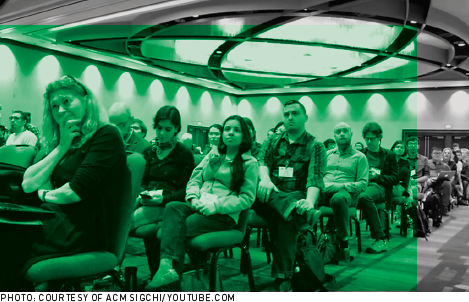
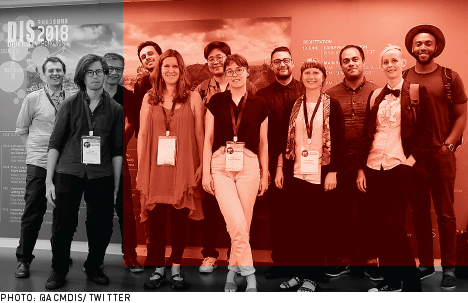
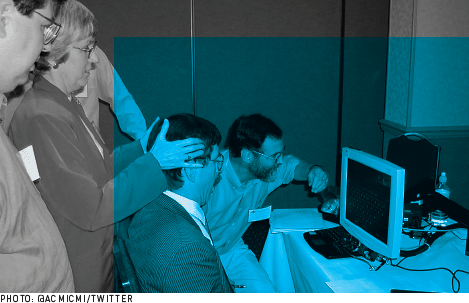
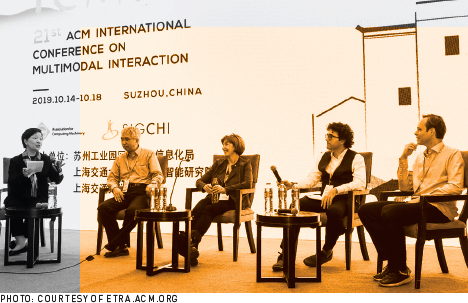
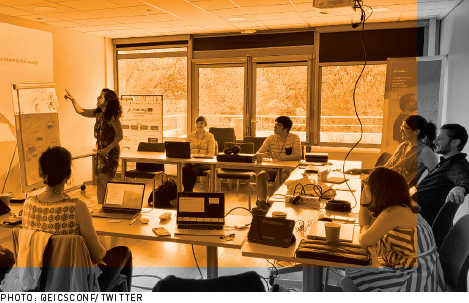
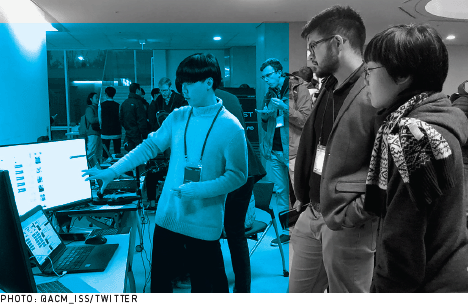
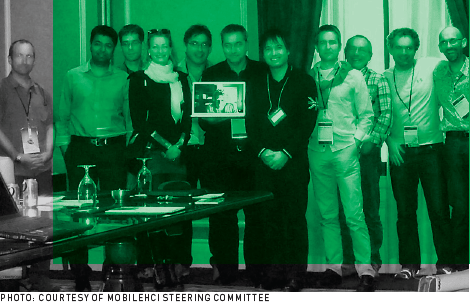
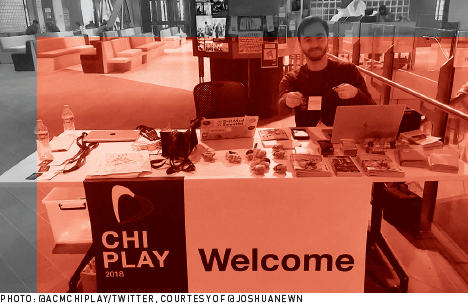
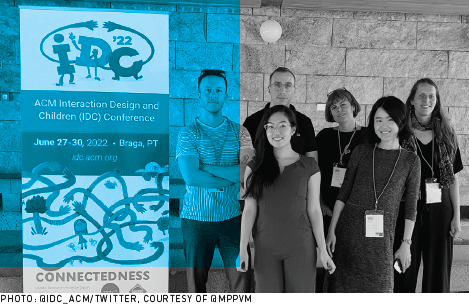
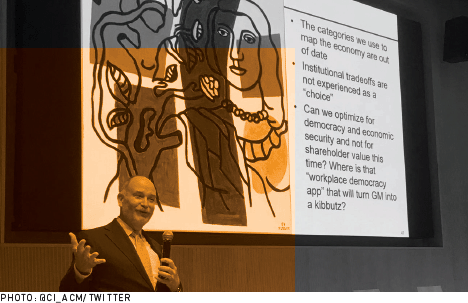
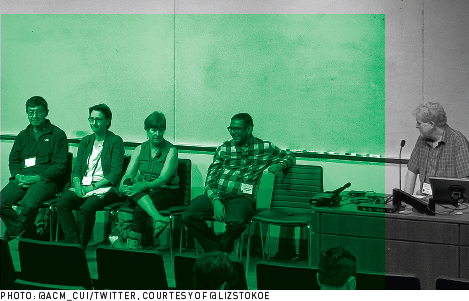
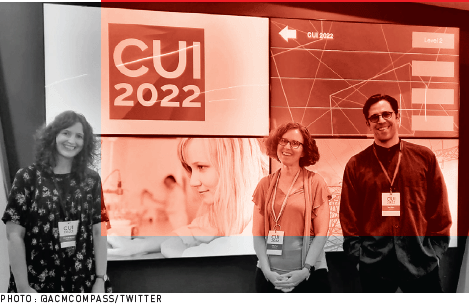


Post Comment
No Comments Found